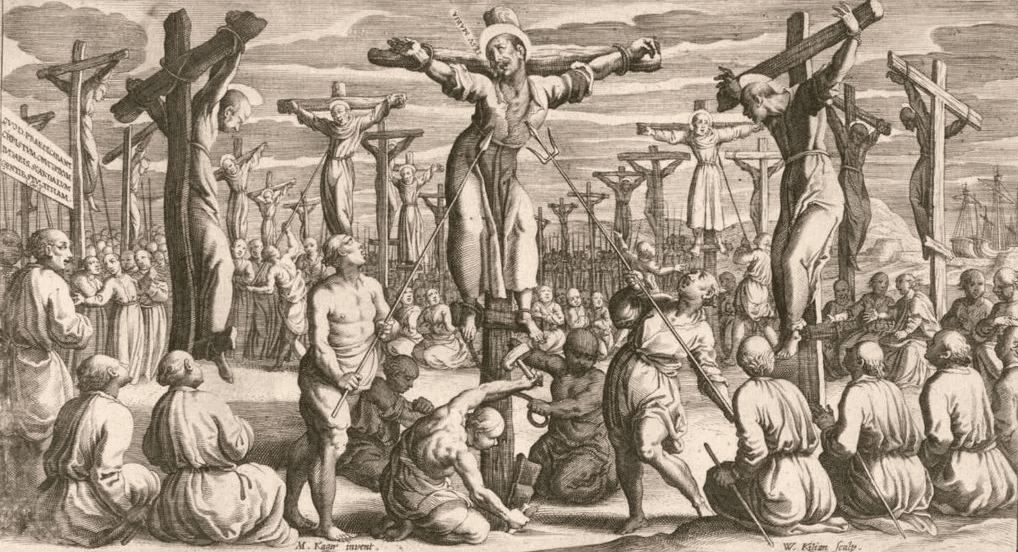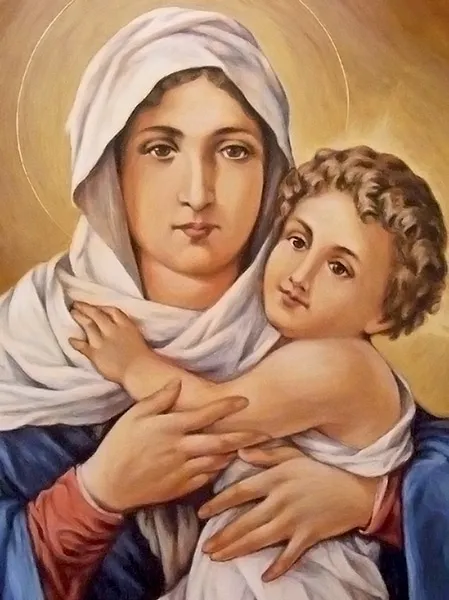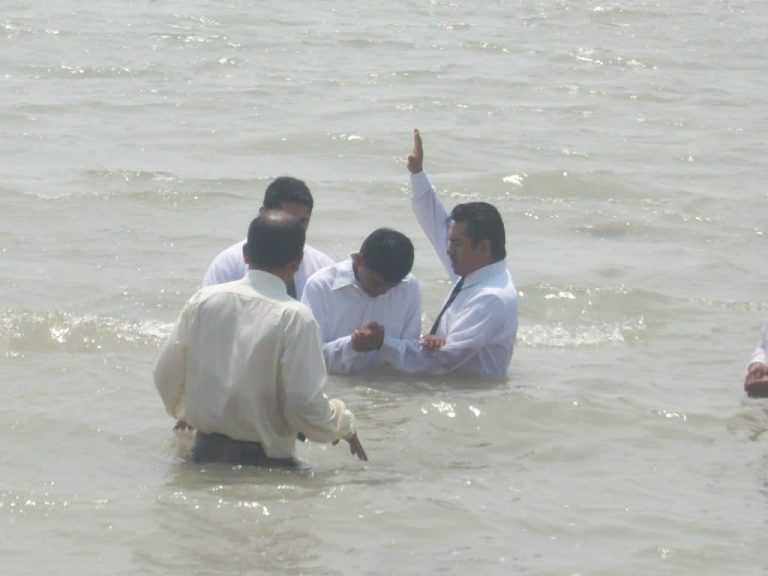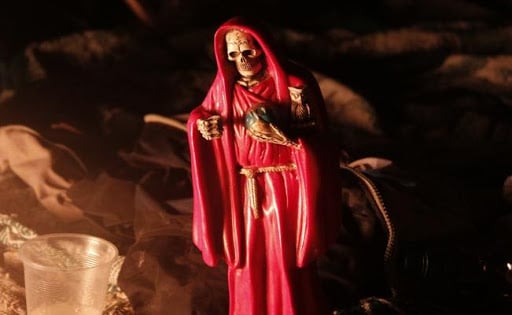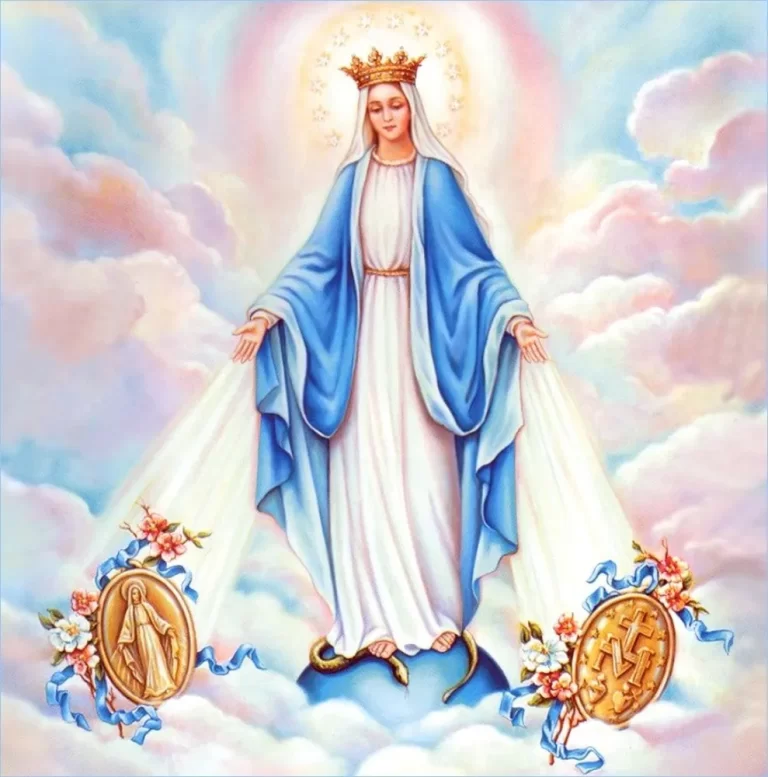Saint Philip of Jesus: Know the Biography and History
San Felipe de Jesus was the Mexican protomartyr. In Mexico, he wrecked his ship where he eventually made it to Japan where he was killed. He died repeating the name of “Jesus”. Patron Saint of Mexico City and its Archbishopric.
Who was Saint Philip of Jesus?
San Felipe de Jesús was a Franciscan friar of New Spain origin. He is currently recognized for being the first saint canonized native to Mexico. In a persecution against the Christians Philip, along with 25 other martyrs were imprisoned, mistreated and humiliated, and finally, sentenced to death. All (even the young) were nailed to crosses, however, they expressed their joy at having died as Christ did (1597).
Biography of Saint Philip of Jesus
This Biography of Saint Philip of Jesus , not only contains part of his story, but is also a life example of what true love for God means and which implies a life given and consecrated to Christ.
His given name was Felipe de las Casas Martínez. He was born in 1572 in Mexico City. Later baptized as Felipe de las Casas. He was the eldest of eleven siblings. Despite being Mexican, his parents, Don Alfonso de las Casas and Doña Antonia Martínez, were Spanish immigrants, however, this was not an impediment for them to set a great example for him.
His family, upheld the spirit of his religiosity, always supported him, to the point that three of his eleven brothers gave themselves completely to the Christian faith.
Felipe was characterized by being an active, restless and very mischievous young man since childhood , to the point that his nurse (nana) once felt tired because of the child’s pranks. This one, he kept in his bedroom a small unripe fruit. The nanny reproached him for it many times, and even told him repeatedly: “Oh Felipe! That fruit will ripen the day you change your attitude and become a Saint”, and that is how it was, the fruit ripened at the moment Felipe died.
Felipe excelled wonderfully in his studies, mainly in grammar and spelling. He studied grammar at the Colegio de San Pedro y San Pablo in Mexico City (this was run by Jesuits). Also, he showed great interest in silver craftsmanship, and although he worked with his father for some time he did not get much results. That is why when he was beatified, the silversmiths’ guild did not hesitate for a second to name him as his patron saint.
The Colegio de San Pablo served for Felipe to deliver his best years in theological and grammatical studies. Also, the trade of crafts and handicrafts made of silver caught his attention. He practiced the trade of silversmith for a time but without seeing many results.
When he was eighteen years old, his father sent him to the Philippines to try his luck. There he settled in the city of Manila. At first, he was dazzled by worldly life, but soon he felt again the call of the Lord who told him: “If you want to come after me, renounce yourself, take up your cross and follow me” (Mt 16, 24 ).
At the age of 18, his father made him work in his merchant business and shipped him to the Philippines to be his purchasing agent in Manila.
When he decided to go to the convent in Puebla to become a Franciscan, his nana commented: – “That will be when the fig tree turns green”, alluding to a dry fig tree that was in the patio of the house.
He arrived at the Puebla convent where Blessed Sebastián de Aparicio resided. Indeed, Felipe lasted very little there, he did not resist that life with so many rules and then decided to return to his father’s house (his friends abandoned him when he ran out of money).
History and Life of Saint Philip of Jesus
The story of San Felipe de Jesús is much more than a simple story, it is a true story, an example and inspiration of life, faith, love and devotion to God.
He was a young adventurer, so at twenty-one (21) years of age, he made his first trip outside of Mexico until he reached the Philippines. To his surprise, he found the Philippines engulfed in military and civil turmoil. Furthermore, the people who traveled to that place, in those days, did not generally do so for pious reasons. Nor was the spiritual predominant in the atmosphere of Manila, a city conquered only in 1571.
He entered the convent of Santa María de los Ángeles in Manila. A year later, Jesus made his religious profession.
Felipe entered with the Franciscans of Manila, this time, he had already matured and his conversion was wholehearted, and even, his devotion and love for God was so great that he changed his name, baptizing himself as “Felipe de Jesús”.
He studied, cared for the sick, he did everything with the dedication of a man who lived for Jesus.
Later, Felipe decided to take vows of penance to belong to the Franciscan Order. The Saint was recognized for his gifts and willingness to help others. This was a fact that led him to profess and want to evangelize others in a very short time.
Curious facts about the life of Saint Philip of Jesus
This is much more than a simple story, it is a true story, so we decided to tell it in parts and in an organized way so that you can be inspired by his life, his faith and love in God.
An unexpected Journey
On July 12, 1596 Felipe had to make one of the most difficult trips of his life: to return to Mexico on a dangerous trip by ship, which also lasted at least 8 months. The objective of this trip to Mexico was to be ordained as a Priest, because there was no Bishop in the Philippines, so said ordination would be carried out in his hometown, along with his family and childhood friends.
With this end in mind, he decided to embark on the Galleon San Felipe together with Fray Juan Pobre de Zamora and other Franciscans. These experienced a great storm and masses of difficulties. The boat suffered considerable damage, but despite everything, they had managed to reach the port of Japan by chance after three long months.
Felipe interpreted this detour as a sign, a joy, an opportunity where he could give himself more to Christ, converting many people in Japan to Christianity.
Without hesitation, Saint Philip of Jesus together with the rest of the Friars took advantage of the occasion to evangelize communities. Saint Francis Xavier had missioned in Japan, leaving behind him two thousand (2000) Christians. The Church continued to flourish and in 1579 there were fifteen thousand (15,000) Christians and fifty-four (54) Jesuits, twenty-two (22) of them Priests.
On the Island of Kyūshū in just two years seventy thousand (70,000) Japanese were baptized, but the situation in Japan was precarious.
In 1582, Taikosama, the highest lord, had taken control of all of Japan, forming an empire. At first he had adopted a favorable attitude towards Christianity, but everything changed in 1587, being instigated by the Bonzes, then he decreed the expulsion of the Missionaries and the demolition of the Christian Temples.
Governor Toyotomi Hideyoshi’s anger was immediate and he ordered the persecution against Felipe and the rest of the Friars. The Toyotomi guardians captured all the Friars to display in the streets.
At first, this order was not rigorously enforced and the missionaries were tolerated as long as they remained underground and dressed in Japanese clothing. They were in this situation when the first Franciscan expedition arrived, who immediately began a great missionary work. There was also Fray Pedro Bautista, one of the brothers from the Franciscan province of the Philippines.
The martyrs of Japan
In November 1596, the Galleon San Felipe ran aground in Urandom, with Felipe along with the other Franciscans on board. The Governor of the place, knowing the riches of the ship, ordered the expropriation and the emperor, to cover up the robbery, re-enacted in Oxaca and Meaco the edit in 1587 alleging that the friars were illegally profiling and that they were preparing a military invasion.
The order, finally, was only restricted to those who have arrived from the Philippines and their companions. They were therefore sentenced to execution. Five (05) Franciscans from Meaco with fifteen (15) baptized Japanese and one (01) Franciscan with two (02) Japanese Christians from Oxaca. Pablo Mity, Juan Devoto and Diego Kisai voluntarily joined them, three (03) Japanese who were with the Jesuits of Oxaca and who wanted to be received “in extremis” in the company.
There were twenty-six (26) in total, among the Franciscans, there were four (04) Spaniards Fray Pedro Bautista de Avila, Fray Martin de la Asensión de Vergara, it seems, Fray Francisco Blano de Orense and Fray Francisco Valla de Villafuerte, and with them , Fray Gonzalo García, (Portuguese Indian), Fray Felipe de Jesús (Mexican). The joy of Christians.
The news caused joy and enthusiasm among the Christians, something that disconcerted the pagans. The neophytes went to the guarded houses of the missionaries to offer them their goods and their lives.
Saint Peter the Baptist, superior of the Franciscans, wrote at the last minute: “Blessed be God and father of our Lord Jesus Christ, for making us suffer with joy for his love.”
Even Christian children joyfully participated in the courage of their elders.
One of them asked a Missionary: – “And what will you do when they find out that you are a Christian?”
To which the boy, getting down on his knees and bowing his head, replied: – “I’ll do like this”
And the boy continued: – “And what will you tell the executioner when he is going to kill you?”
And the missionary replied: – “I will say: Jesus, Mary, Jesus, Mary… Until they have cut off my head”.
For his part Fray Felipe de Jesús commented: – “God caused the Galleon to be lost in order to win Fray Felipe”.
The example of the martyrs
On January 3, 1597 in Meaco, half of the Christian prisoners were cut off, the right ear and three by three they were taken through the city in carts, preceded by the deadly edict, wanting the emperor to instill among his subjects, horror at Christianity, so he arranged for them to be taken by Hiroshima and Yamabushi, to the east, to Nagasaki and Kyushu Island where the presence of Christians was very high.
There, on a hill overlooking the city and the bay, the martyrs were arranged before the crosses that had been prepared for them. That Fray Felipe was embraced with his cross. Another group of them were hanged and hanged to represent the crucifixion in the same way as Jesus Christ.
A witness told
Twenty-six (26) martyrs had been crucified.
- Fray Martin de la Ascensión sang the vendict a “voz populi”.
- Louis Ibaraki, twelve years old (the youngest) repeats over and over again: “Paradise, paradise, Jesus, Mary”…
- Thirteen-year-old Antonio, who was next to Louis, fixed his eyes on the sky and after invoking the names of Jesus and Mary, he intoned the psalm “Praise the deer of the Lord” that he had learned in the catechism class in Nagasaki.
- Others sang the Dedéu with enthusiasm and the crowd of Christians acclaimed with the martyrs Jesus, Mary…
(All this was narrated and transcribed from the testimony of a witness).
Death of Philip of Jesus
Fray Felipe de Jesús could not say anything, because his seat on the cross was very low and remained almost hanging from the ring around his neck. Barely, he managed to shout the name of Jesus three times, making his holy name true.
Felipe de Jesús, they saw him finished, they killed him in the usual way, two spears pierced his sides and crossed his chest coming out of his shoulders, so everyone died. Felipe, the first, was February 5, 1597.
Something that is well remembered in the history of San Felipe de Jesús was that he repeated the name of Jesus on numerous occasions on his deathbed.
Philip of Jesus in History
Philip, who had not yet been ordained a priest, could have avoided torture and prison, but he freely chose the same fate as the missionaries.
According to a legend, that same day the dry fig tree in their home came to life and bore fruit. Philip, had reached the most heroic sanctity. He was beatified, along with his fellow martyrs on September 14, 1627, and canonized on June 8, 1862 by Pope Pius IX.
A legend tells that there was a withered fig tree in his house and that on a certain occasion his nanny, fed up with the child’s pranks, had said «Holy Felipillo? Yes, when the fig tree is green, when the fig tree is green. Thus, on the day of Philip’s death, the fig tree grew green. For this reason, another of its attributes is the fig.
Canonization of Saint Philip and the martyrs
The canonization of Saint Philip of Jesus took place on June 8, 1862, while two centuries earlier the Beatification of all the Friars who accompanied Philip in martyrdom took place.
The Mexican Church, unanimously and as they designated San Felipe de Jesús as the Patron Saint of the Mexican Capital. Citizens called it “Protector against earthquakes or strong tremors”.
On February 5, a conglomerate group of devotees gather in the Church to celebrate this holy martyr.
your last letter
“Dear parents and friends, the night passes quickly, tomorrow I will die executed on the cross, but I am not afraid. My thoughts fly to you and to my beloved homeland. Now that I am about to receive the Baptism of blood, I remember that I was baptized in the Cathedral of Mexico and the times that I attended mass in San Francisco de Plateros.
I regret the years I wasted searching for my appetites, selfish and dissipated. Blessed be God who came to my aid, and I understood that it was not worth living for.
I want to be a missionary, but now, God rewards me before work, allowing me to give my life to prove my love.
I regret not having returned to Mexico, even if it was just one day, but I will return, I am sure that I will return. To tell everyone that the truth and the life worth living for is “eternal life”, peace and good”.
Fray Felipe de Jesus (Nagasaki, Japan)
February 04, 1597.
Prayer to Saint Philip
Saint Philip of Jesus,
Protomartyr of Mexico,
who took your generous spirit to the
ends of the world,
teach us to measure the exact value of things;
May our country
return to its ancient spiritual wealth,
and may God be the Lord of every life.
Saint Philip of Jesus,
may we learn from you
to be as the world needs us.
Glorious Mexican Martyr,
pray for your country
and for those of us who live in it!
A prayer that, in addition to being beautiful, makes your skin crawl, not so much because of the words it contains, but because of the faith with which it is prayed. It is a prayer that invites us to follow his path with as much courage and faith as Philip of Jesus did.
After reading such a life story, witnessing how Felipe de las Casas became “San Felipe de Jesús”, a martyr that we will remember forever.
Final thoughts
We are sure that there is not the slightest doubt that Felipe de Jesús (and the martyrs who accompanied him with courage, faith and totally clear about their beliefs, are and will continue to be through these generations and those to come an example of life and of struggle that every Christian should imitate, because what made him extraordinary and that even today continues to be remembered was precisely that, following the path of God, without questioning, with a devotion, a love and a passion that have no words. to describe it.
Something that is very impressive is that although the intentions of the Governor at that time were to intimidate an entire nation, he achieved just the opposite, not because of his bad intentions, but because Felipe de Jesús and the other twenty-five martyrs who died with him on that fateful day were example of admiration, joy, and even joy.
Because although the moment was quite bitter, the pain was unbearable and they were mistreated and humiliated just as it happened with Jesus, these admirable men and young people felt joy, fullness and happiness because they were offering their lives for a greater good.
This was the greatest test, the baptism of blood, as Felipe mentioned in his last letter to his relatives. Their bodies were mistreated in a cruel, inhuman way, but God granted them the divine grace that despite dying, despite mistreatment and exposure, their bodies remained quite well for so much suffering and this made an entire nation evangelize in an instant, that a whole nation began to believe in immensity.
Also the power of God, that an entire nation began to believe in his word, and that those who believed could strengthen their faith.
The cult of Felipe de Jesús still has curious resonances today: It has become a tradition, in religious services in the Metropolitan Cathedral, every February 5, to give figs to the faithful, in allusion to the prodigy of the fig tree.
If you don’t know the story, let us share it with you:
Tradition tells that at the same moment that Felipe de Jesús suffered martyrdom in distant Japan, the old fig tree, previously dry and withered located in the patio of his father’s house (in Mexico City) grew green at the same moment in the Felipe de Jesus died.
The old family servant, the one who had complained so many times about the pranks and misbehavior of the boy Felipe, yes, the one who had predicted that the fig tree would be the testimony of the radical transformation of the young rebel, fell to her knees screaming ” Felipillo santo, Felipillo santo!”

